Back to Kashmir
The post-Balakot story has many variations
 Mehr Tarar
Mehr Tarar
 Mehr Tarar
Mehr Tarar
 |
20 Mar, 2019
|
20 Mar, 2019
/wp-content/uploads/2019/03/BacktoKashmir1.jpg)
ON FEBRUARY 14TH, 2019, a 70-vehicle convoy of the Indian Central Reserve Police Force (CRPF) was driving down the Srinagar-Jammu national highway. Near Lethpora, Awantipora, district Pulwama, a Scorpio SUV rammed into one of the buses, causing an explosion that was heard miles away. The bus exploded into pieces, also destroying the bus next in the convoy. Both the buses were charred.
All that remained were parts, human and metal, indistinguishable. A thick film of blood and soot covered everything in the multiple-metre radius. Forty CRPF men turned into bits of flesh, bones, limbs, internal organs in a matter of seconds.
The attacker—militant, terrorist, a radicalised man, separatist, freedom fighter, depending on the narrative of the side of the conflict you speak from—was Adil Ahmad Dar, a Kashmiri from Kakapora, and a resident of Gundibagh, Pulwama. Dar was 20 years old.
The initial investigation revealed that the Scorpio was wired with 350 kilograms of explosives, reportedly, RDX. Post-attack, a video emerged on social media in which a black-jacketed Dar was holding a gun in each hand, weapons flanking him and on the table facing him, al-jihad written in white on a black circle. In the video in which the words seemed out of sync with the movement of his mouth, Dar highlighted the what-why-how of the attack, attributing it to the UN-banned Jaish-e-Mohammad (JeM).
Dar, a high school dropout, aka Adil Ahmad Gaadi Takranewala and Waqas Commando of Gundibagh, was, reportedly, a 2018 JeM recruit, and a normal teenager, in his father’s words, until that one incident in 2016 that resulted in an irrevocable change: “One day, he was returning from school. Men from the STF stopped him and made him rub his nose on ground [STF forced the boy to make a circle around their jeep with his nose]. He kept mentioning this incident again and again.”
JeM, whose chief Masood Azhar lives in Pakistan, reportedly denied any involvement in the attack.
Post-Pulwama, there were reportedly ‘attacks on Kashmiris, even on ordinary Muslims, in various parts of India in the aftermath of the terrorist attack in Pulwama’.
India, enraged, grief-stricken, a justified response to what was said to be the highest–ever number of state casualties in Jammu and Kashmir (J&K), placed predictably the responsibility of the attack on Pakistan. Pakistan’s government while announcing a categorical condemnation of the attack was, understandably, angry at being blamed for the attack. Indian media and politicians were back to non-stop warmongering, a call for vengeance and a befitting response to Pakistan. Id est: Without waiting for completion of a proper investigation, declare war on Pakistan, and announce to kill double the number of Pakistanis.
On February 25th, India carried out air strikes across the LoC, reportedly crossing the disputed (as per Pakistan’s description of the status of J&K) territory of J&K, reaching into Pakistan’s territory into Balakot in Khyber Pakhtunkhwa. India claims to have targeted JeM’s ‘terror camps’ across the LoC, killing 200-300 militants. The number keeps changing, but the narrative remains unaltered: India targeted and eliminated a sanctuary of terrorists across the LoC.
On February 26th, Pakistan Air Force downed Indian planes, and captured a pilot, Wing Commander Abhinandan Varthaman. As the news became a global topic, India’s concern was singular: how to ensure the safety in captivity and safe return of Varthaman.
A video released by the Pakistan army showed an unharmed Varthaman praising Pakistani chai and the professional attitude of the Pakistani army.
On February 28th, Prime Minister Imran Khan, two days after the capture of Varthaman, announced his release as a “peace gesture” during an address to a joint session of parliament. What was remarkable wasn’t just the announcement of a release that most of us in Pakistan who champion the imperativeness of good relations between Pakistan and India already expected Khan to do, it was also his reaffirmation of the willingness of the whole of Pakistan—Pakistan government, establishment and people—to have a non-aggressive attitude vis-à-vis initiation of a framework to have long-lasting peace with India.
On March 1st, Wing Commander Abhinandan Varthaman was returned to India.
Contrary to what India through its media tried to drum into sensibilities of its people, the Geneva Conventions are unambiguous. Article 118, first paragraph, 1949 Geneva Convention III says: ‘Prisoners of war shall be released and repatriated without delay after the cessation of active hostilities.’
In the present scenario of continuing hostilities, Varthaman could have been held much longer by Pakistan, but Pakistan released him without any external pressure, conditions, drama or suspense.
What will it take for powers that be to notice the pain of Kashmiris who are not Pakistani and who, even when supporting the narrative of India, are never really considered ‘Indian’?
Another latest phenomenon is the emergence of two narratives, one of Pakistan, and the other of India, regarding cessation of hostilities. It is interesting to note that while Indian Prime Minister Narendra Modi refrains from making an official statement, either directly to the government of Pakistan or through a media statement addressing Pakistan and the 1.3 billion Indians for whom he is a constant presence on their televisions and telephone screens, newspapers, billboards and twitter timelines.
Modi is everywhere yet he is unavailable for a straight comment.
In the backdrop of the upcoming Indian elections, everything that Modi says is either in a political rally, through one of his party spokespersons, or articulated in a speech in, say, a conclave held by a media house.
On February 28th, Prime Minister Khan, in a televised speech, while addressing his nation also addressed India. Khan reiterating Pakistan’s readiness for warfare as a retaliatory step, underscoring the significance of an immediate de-escalation, asked India for discontinuation of exacerbation of aggression, clearly stating: “let good sense prevail.”
Remembering Khan’s pre-prime ministerial swearing-in words, “Pakistan would take two steps forward if India takes one step towards peace,” he has also said that on being provided evidence by India, Pakistan would take action against any Pakistani who is alleged to be involved in the Pulwama attack. That Pakistan is willing to initiate a dialogue on India’s terms: India’s first condition is always to have terrorism as the first point. Khan is ready to accept that prerequisite for a dialogue.
Khan’s March 4th tweet is a further testament to his pro- peace, anti-war, pro-development stance: ‘I am not worthy of the Nobel Peace prize. The person worthy of this would be the one who solves the Kashmir dispute according to the wishes of the Kashmiri people and paves the way for peace & human development in the subcontinent.’
Action against various militant organisations including JeM is already in process in Pakistan.
IN INDIA, SECTIONS of media are the vehicle for dispensation of misinformation, building and propagation of an anti-Pakistan and a pro-war narrative, and such a convoluted embellishment of a real incident that facts become irrelevant, making sensationalism the keyword. Indian media and its hydra-esque role in the shaping of a narrative is not just to satiate the sentiments of justified anger and the grief of Indians after the Pulwama tragedy but is also a transparent phenomenon in reaffirming of what to me is the unofficial strategy of Modi’s Government in its handling of the part of its foreign policy folder that has a single name in its index: Pakistan.
The Indian Government may have avoided making a direct statement to Pakistan, but a huge section of Indian media with its not-so-secret allegiance to promulgation of Indian Government’s stances vis-à-vis Pakistan and various other issues created such a high-pitched warmongering newspeak since the February 14th Pulwama attack that it resulted in an unprecedented wave of criticism. What was being criticised: Indian media. Who was criticising Indian media: Pakistan, global media, and guess what, India.
Despite not being new, the role of Indian media in heightening of tensions between Pakistan and India has recently materialised as a grave issue, and not just in Pakistan and globally but even in the rational sections of Indian media. What is worrisome is the hashtagging of a huge and a very complex phenomenon of war into binaries of #AvengePulwama and #surgicalstrike2. What is troubling is an Arnab Goswami leading the warmongering pack, turning multidimensional governmental and diplomatic realities of two sovereign countries into a linear primitive chant of badla: ‘We want revenge, not condemnation. …It is time for blood, the enemy’s blood.’
It is the construct of a narrative with sensationalism of hostilities through misrepresentation of truth and invented stories, and a dangerously reckless trivialisation of the dreadfulness of ramifications of even a small-scale war between nuclear- armed Pakistan and India. It is the manufacturing of a stance, which, repeated and reinforced, has the power to affect the lives of 1.5 billion Pakistanis and Indians. No longer is it about the legitimacy or the falsehood of the claims of Pakistan and India. It has been dirtied down to a war of TRPs against humanity.
As a human being, as a Muslim, as a Pakistani, and as a relentless and a vociferous endorser of peace between Pakistan and India, my condemnation of the killing of 40 CRPF personnel in an act of terrorism is categorical. There is no whataboutery when it comes to terrorism. The intention could be any, the motive may be justified to perpetrators of those acts, and the goal may even be noble to them. Ramming an explosives-rigged SUV into a bus full of men—even those in the uniform you loathe—is terrorism. Plain and simple.
Why is it that only the deaths of security personnel count as a national loss, and not of those who are killed for just being in the wrong place at the wrong time?
What is not that plain and simple is the reality of Kashmir. That land that by Pakistan on both sides of the LoC is considered a UN-declared disputed territory, that in Pakistan is known as the Indian-occupied Kashmir, and as the Pakistan-occupied Kashmir in India, and in which there is a battle that has been raging between two sides that are so unevenly matched, it is absurd to even call it a battle. It is a brutal suppression of one side by the other. There is no other way to look at it, if you are, forget about a Pakistani, anyone other than an Indian.
I as a human being, as a Muslim, as a Pakistani and as a relentless and a vociferous endorser of peace between Pakistan and India support the peaceful struggle of Kashmiris for the recognition of their right of self-determination. The same principle is applicable to Kashmiris on the other side of the LoC, my side. Plain and simple.
Kashmir does not have a single story.
Kashmir is not a hyphenation between Pakistan and India.
To me it is all about Kashmiris.
What will it take for powers-that-be to notice the pain of Kashmiris who are not Pakistani and who, even when supporting the narrative of India, are never really considered ‘Indian’? Who will ensure that the inalienable rights of Kashmiris are more than mere words on the cheap piece of paper they are printed on? What is the fear that makes India deploy hundreds of thousands of soldiers and other law enforcement agencies in that stunningly beautiful land called Kashmir?
Why is there an unwillingness in India to accept that despite the once-upon-a-time open, and mostly covert and denied, armed assistance of the Pakistani establishment to the earlier Kashmir insurgency, there is a growing consensus in Pakistan between the civil and the military leadership that Pakistan’s support of Kashmiris’ struggle is and will be diplomatic, moral and non-violent?
Why is there adamancy to even accept keeping in view the 22-year-long political narrative of Prime Minister Khan that there is zero tolerance for violence and terrorism in his system of governance? Why is it not highlighted in India that Khan in Islamabad while speaking to Indian journalists after the inauguration of the Kartarpur corridor said in unambiguous words: “Let me tell you, terrorism isn’t in the interest of Pakistan or India. Even the issue of Kashmir could be resolved through dialogue… if India couldn’t do, it should at least do something for the people of the occupied Kashmir. There can’t be a military solution for Kashmir.” Why is Prime Minister Khan’s stance on terrorism “…not in our interest to allow use of Pakistan’s territory for terror outside” not being debated in talk shows in India?
Why is there a petulant refusal to initiate a dialogue with Pakistan and Kashmiris to initiate the resolving of the Kashmir issue, conclusively, without parroting “no-talks- until-Pakistan-centric-terror-ends” while constantly blaming Pakistan for every stone, bullet, IED and bomb that is used in Kashmir?
What is this unchangeable arrogance to accept the validity of the indigenousness of the Kashmiris’ struggle, stripping it of its Pakistani, Indian and any other dynamic? Why is it impossible even if it is unacceptable in practice to simply respect in principle the UN-declared status of the region of Kashmir? What is behind the refusal to even acknowledge that even if it is a small number— Kashmiris, even, some pro-India ones, state the opposite—who wish for freedom, Kashmiris do have a right to be heard?
Why is the 1.3 billion-India so determined to keep the 14 million-Kashmir so heavily militarised that even the pro-India governments of Jammu and Kashmir have much to say about it? Why is India that considers Jammu and Kashmir its integral part so blinded by its hate of Pakistan and its constant blame- shifting of the situation of Kashmir on Pakistan that it is unable to see the anguish of those that it calls its own?
Why is India too myopic to even pay heed to the constant statements by pro-India leaders like Farooq and Omar Abdullah to look beyond Pakistan at the localisation of the situation of Jammu and Kashmir in the last few years? Why is it that while “India promises to retaliate after the deadly attack in Kashmir blaming Pakistan for the bombing”, it is unable to accept the bitter truth that the “Kashmir insurgency is increasingly homegrown, locals fed up with Delhi’s heavy-handed approach?”
Why does the Indian Government repudiate as propaganda reports on Kashmir by international human rights organisations? Why is the right to speak up, for what many Kashmiris consider their fundamental right, such a huge crime that there is a violent and autocratic system of suppression of speech, protest, assembly? Why are pellet guns used in excessive highhandedness on stone-pelters, making innocent bystanders, and even people doing everyday things in their homes, collateral damage?
Why is justice non-existent for Kashmiris?
Why are hundreds of young Kashmiris injured, maimed and blinded? Why are 20-month-old babies shot in the face, albeit accidentally, in a constant blurring of that almost invisible line between humanity and barbarity? Why is it that only the deaths of security personnel count as a national loss, and not of those who are killed for just being in the wrong place at the wrong time?
Why do Indian soldiers kill so many young Kashmiri men on the slightest pretext, leaving behind families who mourn for life, living in dread for their next generation? Why are Kashmiris, described as pro-freedom leaders by many Kashmiris, or in the Indian State’s language, separatists, forced to live in a perpetual state of fear, house arrest and unspecified sentences in jail? Why are many young Kashmiris taken by the police tortured, and jailed without being sentenced?
Why do so many graves in Kashmir have no tombstone, an identification mark?
Why is Kashmir apna but Kashmiris disposable, label-able, traitors?
Why is the way forward in Jammu and Kashmir not dialogue but a bullet?
A pellet or a bullet, the blood that is shed is that of a Kashmiri.
Until when? Each new freshly dug grave that is covered in rose petals soaked in tears of a mourning family is that of a Kashmiri.
How many more?

/wp-content/uploads/2025/05/Cover-War-Shock-1.jpg)





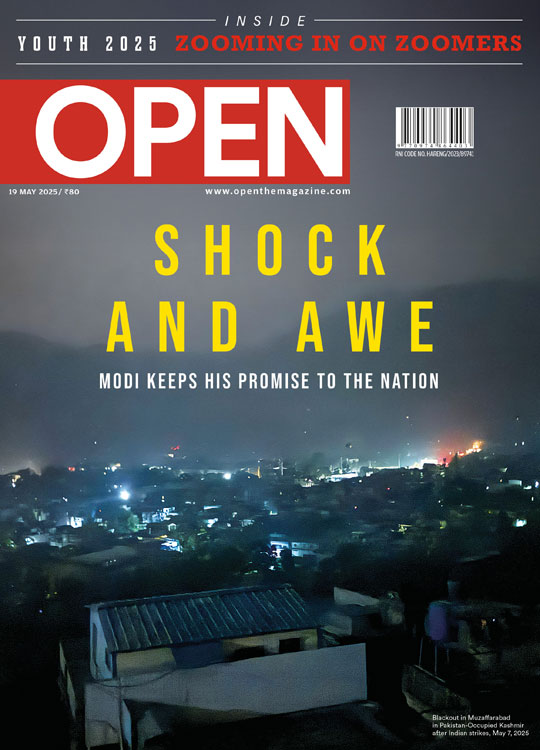

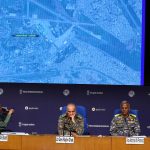
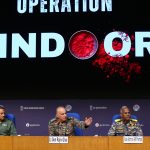
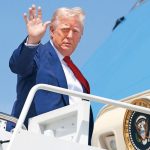
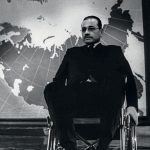
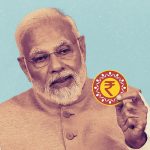

More Columns
Jasprit Bumrah Captain? Shubman Gill His Sidekick! Short Post
Our response will be fierce and punitive, says India Open
IAF pounding of air bases, command and military infra forced Pak to seek ceasefire Open